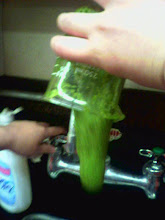The Zelda series leaves a lot of room for interpretation and theorizing, and the creators apparently design the games to be that way. As a fan this is a fun thing to do as it allows players to look deeply at the games to try and see what is hidden. Of course, sometimes they will see what isn't there. This in itself is subjective because what one person believes will not necessarily be what others believe. A good example of this would be trying to pair our main hero up with someone, especially in the later 3D games (Ocarina and beyond). There are in-game references and "hints", but these are loose at best. Until the time when something is presented not as possibility but as canon, there will be debates on who he settles down with (if he ever settles down at all).
Apply this same thing to Majora's Mask. Admittedly I have never fully beaten the game (I've only gotten to the part where you save Lulu's eggs from the pirates), but as I am rewriting my old MM fanfiction tied in with the Lost in Hyrule series, I've been looking into fan theories for fun, thinking maybe I could incorporate something into my narrative. Although this game is almost on par with Ocarina, I think people are looking too deeply into things. From what has been revealed, the game Shigeru Miyamoto wanted Ocarina to be was not the final product that was released. It was still a great game, and many fans, including myself, got into the series through it. Still, he wanted a game that was far more immersive and larger. When it became apparent it was not feasible, they stripped it down and thus Zelda 64 became Ocarina of Time.
Two years after Ocarina of Time was released they put out Majora's Mask. Termed Zelda Gaiden at first, many people were looking forward to a follow up game. Then it came out and right away it was apparent at the reuse of many characters (among other things like control scheme, the fairy partner, and so on). One could see this as being lazy, but really, it was only a two year difference between games. Then it become obvious these characters are more than just NPs put there to interact with. They take on personalities and have problems aside from the impending fall of the moon. Link is then put in place to help them solve their problems, which aids him on his own quest plenty of times. If nothing else, you get the most powerful mask ever. What this game does is make a world that is deeper and connects the player to the other characters the way Zelda 64 was envisioned to do. Sure, it reused character models and ran on the same engine, but these shortcuts allowed the game to be as it was. And it was dark in many respects with some believing Twilight Princess can not compare. There are plenty of things to do and stuff to see, which has led to the many theories.
Theories are fun and all, and maybe there is credence to a lot of what is said. Maybe some of us are getting things right, or maybe we're not getting it at all. Who knows really? But it is fun to interpret. It does make for a richer experience, especially when you go back and play after you've aged a bit. Just don't take things too seriously, especially when there might not be answers. It did what its prequel couldn't and did it well. That in itself makes it a great game. So have fun, beat it, get all the masks, and slap on Fierce Deity to kick some Majora butt.
Tuesday, January 26, 2010
Subscribe to:
Post Comments (Atom)



No comments:
Post a Comment